Hartmann, Erich, born on 19-04-1922 in Weissach, Württemberg  to Doctor Alfred Erich Hartmann and his wife, Elisabeth Wilhelmine, born Machtholf. His father Doctor Alfred Erich Hartmann, took his family to China during the economic depression after the first war and found work.
to Doctor Alfred Erich Hartmann and his wife, Elisabeth Wilhelmine, born Machtholf. His father Doctor Alfred Erich Hartmann, took his family to China during the economic depression after the first war and found work.  His mother, a brilliant sportsmen was a pilot and an aviation enthusiast. Hartmann’s flying career began when he joined the glider training program of the fledgling Luftwaffe and was taught to fly by his mother, one of the first female glider pilots in Germany. The family was forced to return to Germany in 1928, when the Chinese Civil War broke out. During World War II, Hartmann’s younger brother, Alfred, also joined the Luftwaffe, serving as a gunner on a Junker 87 in North Africa. “Bubi” was captured by the British and spent four years as a prisoner of war. Bubi Hartmann began his military training on 01-10-1940 at the 10th Flying Regiment in Neukuhren.
His mother, a brilliant sportsmen was a pilot and an aviation enthusiast. Hartmann’s flying career began when he joined the glider training program of the fledgling Luftwaffe and was taught to fly by his mother, one of the first female glider pilots in Germany. The family was forced to return to Germany in 1928, when the Chinese Civil War broke out. During World War II, Hartmann’s younger brother, Alfred, also joined the Luftwaffe, serving as a gunner on a Junker 87 in North Africa. “Bubi” was captured by the British and spent four years as a prisoner of war. Bubi Hartmann began his military training on 01-10-1940 at the 10th Flying Regiment in Neukuhren.

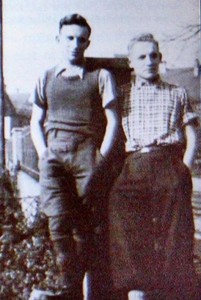




His advanced pilot training was completed on 31-01-1942, he got the nickname “Bubi” “ÿoungboy” and he learned to fly the Messerschmitt Bf 109 at the Jagdfliegerschule 2 in Zerbst. He soon was a favorourite of Hermann Göring (did you know) 
 In October 1942, Hartmann was assigned to fighter wing Jagdgeschwader 52
In October 1942, Hartmann was assigned to fighter wing Jagdgeschwader 52  .Jagdgeschwader 52 (JG 52) (52nd Fighter Wing) of the Luftwaffe, was the most successful fighter wing of all time, with a claimed total of more than 10.000 victories over enemy aircraft during World War II. It was the unit of the top three scoring Fighter aces of all time, Major, Erich Hartmann, Major Gerhard Barkhorn
.Jagdgeschwader 52 (JG 52) (52nd Fighter Wing) of the Luftwaffe, was the most successful fighter wing of all time, with a claimed total of more than 10.000 victories over enemy aircraft during World War II. It was the unit of the top three scoring Fighter aces of all time, Major, Erich Hartmann, Major Gerhard Barkhorn 
 and Major Günther Rall.
and Major Günther Rall. 
 The unit flew exclusively with the various versions of the Messerschmitt Bf 109 throughout the war. Hartmann’s first flight ended with brake failure, causing the Stuka to crash into and destroy the controller’s hut. Hartmann claimed his first kill, an Ilyushin Il-2
The unit flew exclusively with the various versions of the Messerschmitt Bf 109 throughout the war. Hartmann’s first flight ended with brake failure, causing the Stuka to crash into and destroy the controller’s hut. Hartmann claimed his first kill, an Ilyushin Il-2

 of the 7th Guards Ground Attack Aviation Regiment, but by the end of 1942, he had added only one more kill to his tally. Commander of the 7th Guards Ground Attack Aviation Regiment was Ivan Maltsev
of the 7th Guards Ground Attack Aviation Regiment, but by the end of 1942, he had added only one more kill to his tally. Commander of the 7th Guards Ground Attack Aviation Regiment was Ivan Maltsev

 who died age 68, on 14-01-1987. As with many top aces, it took Hartmann some time to establish himself as a consistently scoring fighter pilot. By late August 1943, Hartmann, here with his faithful mechanic and friend, Heinz Mertens, known as ‘Bubi and Bimmel’ Eastern front,
who died age 68, on 14-01-1987. As with many top aces, it took Hartmann some time to establish himself as a consistently scoring fighter pilot. By late August 1943, Hartmann, here with his faithful mechanic and friend, Heinz Mertens, known as ‘Bubi and Bimmel’ Eastern front,  Summer 1943, had 90 aerial victories. On 19 August, in combat with Il-2s, his aircraft was damaged by debris, and he was forced to land behind Soviet lines. Hartmann’s Geschwaderkommodore, Hauptmann, Dietrich Hrabak, had given orders to Hartmann’s unit to support the dive bombers of Sturzkampfgeschwader 2, led by the famous Stuka pilot Oberst, Hans Ulrich Rudel
Summer 1943, had 90 aerial victories. On 19 August, in combat with Il-2s, his aircraft was damaged by debris, and he was forced to land behind Soviet lines. Hartmann’s Geschwaderkommodore, Hauptmann, Dietrich Hrabak, had given orders to Hartmann’s unit to support the dive bombers of Sturzkampfgeschwader 2, led by the famous Stuka pilot Oberst, Hans Ulrich Rudel 
 in a counterattack. Capture was unavoidable, he faked internal injuries. Hartmann’s acting so convinced the Soviets that they put him on a stretcher and placed him on a truck. Hartmann patiently waited for the right moment to escape, then, using the distraction of the Stuka’s attack, he attacked the single guard. Hartmann jumped out of the back of the truck and ran into a large field of giant sunflowers. As he approached the German position, he was challenged by a sentry who fired a shot which passed through his trousers. In October 1943, Hartmann claimed another 33 kills, and, on 29 October, he was awarded the Ritterkreuz, at which point his tally stood at 148 kills. In March 1944, Erich Hartmann and Gerhard Barkhorn , were summoned to Adolf Hitler’s (did you know) (see Hitler parents) (see William Hitler) Berghof in Berchtesgaden. Hartmann, received the Oak Leaves to the Knight’s Cross.
in a counterattack. Capture was unavoidable, he faked internal injuries. Hartmann’s acting so convinced the Soviets that they put him on a stretcher and placed him on a truck. Hartmann patiently waited for the right moment to escape, then, using the distraction of the Stuka’s attack, he attacked the single guard. Hartmann jumped out of the back of the truck and ran into a large field of giant sunflowers. As he approached the German position, he was challenged by a sentry who fired a shot which passed through his trousers. In October 1943, Hartmann claimed another 33 kills, and, on 29 October, he was awarded the Ritterkreuz, at which point his tally stood at 148 kills. In March 1944, Erich Hartmann and Gerhard Barkhorn , were summoned to Adolf Hitler’s (did you know) (see Hitler parents) (see William Hitler) Berghof in Berchtesgaden. Hartmann, received the Oak Leaves to the Knight’s Cross.
 On the train, they got drunk on cognac and champagne. On 17-08-1944, Hartmann became the top scoring fighter ace, surpassing fellow JG 52 pilot Gerhard Barkhorn, with his 274th kill. During Hartmann’s new meeting with Hitler, Hartmann discussed at length the shortcomings of fighter pilot training. Allegedly, Hitler revealed to Hartmann that he believed that, “militarily, the war is lost,” and that he wished the Luftwaffe had “more like him and Rudel”. The Diamonds to the Knight’s Cross also earned him a ten-day leave.
On the train, they got drunk on cognac and champagne. On 17-08-1944, Hartmann became the top scoring fighter ace, surpassing fellow JG 52 pilot Gerhard Barkhorn, with his 274th kill. During Hartmann’s new meeting with Hitler, Hartmann discussed at length the shortcomings of fighter pilot training. Allegedly, Hitler revealed to Hartmann that he believed that, “militarily, the war is lost,” and that he wished the Luftwaffe had “more like him and Rudel”. The Diamonds to the Knight’s Cross also earned him a ten-day leave.  Bubi married his long-time teenage love, Ursula “Uschi” Paetsch in December 1944, in Wiesbaden and Gerhard Barkhorn and and Hauptmann, Wilhelm Batz were his best men and the couple got two children, their son Peter Erich Hartmann
Bubi married his long-time teenage love, Ursula “Uschi” Paetsch in December 1944, in Wiesbaden and Gerhard Barkhorn and and Hauptmann, Wilhelm Batz were his best men and the couple got two children, their son Peter Erich Hartmann


 died three and a half three years old, when Erich was still in Russian prison and daughter Ursula. He knew right away that she was the one for him but their parents were none too thrilled, now she had to wait ten years to see him again. On his way to his vacation in 1944, Hartmann was ordered by General der Jagdflieger, Kommodore Jagd Geschwader 26 “Schlageter”, Adolf Galland to attend a meeting in Berlin-Gatow. Galland wanted to transfer Hartmann to the Me 262 test program. Unlike Hauptmann, “Star of Afrika” 4. Jagdgeschwader 52
died three and a half three years old, when Erich was still in Russian prison and daughter Ursula. He knew right away that she was the one for him but their parents were none too thrilled, now she had to wait ten years to see him again. On his way to his vacation in 1944, Hartmann was ordered by General der Jagdflieger, Kommodore Jagd Geschwader 26 “Schlageter”, Adolf Galland to attend a meeting in Berlin-Gatow. Galland wanted to transfer Hartmann to the Me 262 test program. Unlike Hauptmann, “Star of Afrika” 4. Jagdgeschwader 52 ![]() , Hans-Joachim “Jochen” Marseille,
, Hans-Joachim “Jochen” Marseille, 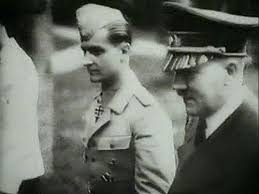
 who was a marksman and expert in the art of deflection shooting, Hartmann was a master of stalk-and-ambush tactics. By his own account, he was convinced that 80% of the pilots he downed did not even realize what hit them. Hartmann’s last kill occurred over Brno, Czechoslovakia, on 08-05-1945, the last day of the war in Europe. When he landed, Hartmann learned that the Soviet forces were within artillery range of the airfield. Hartmann later recalled his final violent action of the war: We destroyed the aircraft and all munitions, everything. I sat in my fighter and fired the guns into the woods where all the fuel had been dropped, and then jumped out. We destroyed twenty-five perfectly good fighters. They would be nice to have in museums now. As Gruppenkommandeur of I./JG 52, Hartmann chose to surrender his unit to members of the US 90th Infantry Division
who was a marksman and expert in the art of deflection shooting, Hartmann was a master of stalk-and-ambush tactics. By his own account, he was convinced that 80% of the pilots he downed did not even realize what hit them. Hartmann’s last kill occurred over Brno, Czechoslovakia, on 08-05-1945, the last day of the war in Europe. When he landed, Hartmann learned that the Soviet forces were within artillery range of the airfield. Hartmann later recalled his final violent action of the war: We destroyed the aircraft and all munitions, everything. I sat in my fighter and fired the guns into the woods where all the fuel had been dropped, and then jumped out. We destroyed twenty-five perfectly good fighters. They would be nice to have in museums now. As Gruppenkommandeur of I./JG 52, Hartmann chose to surrender his unit to members of the US 90th Infantry Division  , under General Raymond Stallings McLain,
, under General Raymond Stallings McLain,

 who died age 64, on 14-12-1954. After his capture, the U.S. Army handed Hartmann, his pilots, and ground crew over to the Soviet Union on 24 May, where he was imprisoned in accordance with the Yalta Agreements, which stated that airmen and soldiers fighting Soviet forces had to surrender directly to them. Hartmann and his unit were led by the Americans to a large open-air compound to await the transfer. The number of prisoners grew to 50,000. Living conditions deteriorated, and some American guards turned “a blind eye” to escapes. In some cases, they assisted by providing food and maps. In 1955, Hartmann’s mother wrote to the new West German Chancellor, Konrad Adenauer,
who died age 64, on 14-12-1954. After his capture, the U.S. Army handed Hartmann, his pilots, and ground crew over to the Soviet Union on 24 May, where he was imprisoned in accordance with the Yalta Agreements, which stated that airmen and soldiers fighting Soviet forces had to surrender directly to them. Hartmann and his unit were led by the Americans to a large open-air compound to await the transfer. The number of prisoners grew to 50,000. Living conditions deteriorated, and some American guards turned “a blind eye” to escapes. In some cases, they assisted by providing food and maps. In 1955, Hartmann’s mother wrote to the new West German Chancellor, Konrad Adenauer,  to whom she appealed to secure his freedom and Adenauer intervention brought the last 5000 prisoners home.
to whom she appealed to secure his freedom and Adenauer intervention brought the last 5000 prisoners home. Erich Hartmann came home age 33 and flew 1,404 combat missions during World War II, resulting in 825 engagements and was never shot down. He was never wounded and never bailed out due to damage inflicted by enemy pilots. His kill tally included some 200 various single-engined Soviet-built fighters, more than 80 US-built P-39s, 15 Il-2 ground attack aircraft, and 10 twin-engined medium bombers.
Erich Hartmann came home age 33 and flew 1,404 combat missions during World War II, resulting in 825 engagements and was never shot down. He was never wounded and never bailed out due to damage inflicted by enemy pilots. His kill tally included some 200 various single-engined Soviet-built fighters, more than 80 US-built P-39s, 15 Il-2 ground attack aircraft, and 10 twin-engined medium bombers.
Death and burial ground of Hartmann, Erich “Bubi”.
Bubi Hartmann, who remained friends with Gerhard Barkhorn, Gruppenkommandeur III./JG 52 and II./JG 11, Gunther Rall and Kommandeur der II./J.G. 52, Johannes “Macky” Steinhoff

 after his military retirement, worked as a flight instructor in Hangelar, near Bonn, from 1971–1974 and also flew in an aerobatics team with “Dolfo” Galland. He experienced a sudden change in his lifestyle in 1980, when he caught a cold that developed into angina pectoris—the condition that had killed his father at the age of 58. He recovered and, by 1983, was medically cleared to fly, after which he resumed instructing at the various flying schools. However, fearing a second attack, he became cautious and limited his appearances at public events. He stated: “I am retired and I am a civilian, and now I like to have my rest and peace. I do not live for exhibitions.”
after his military retirement, worked as a flight instructor in Hangelar, near Bonn, from 1971–1974 and also flew in an aerobatics team with “Dolfo” Galland. He experienced a sudden change in his lifestyle in 1980, when he caught a cold that developed into angina pectoris—the condition that had killed his father at the age of 58. He recovered and, by 1983, was medically cleared to fly, after which he resumed instructing at the various flying schools. However, fearing a second attack, he became cautious and limited his appearances at public events. He stated: “I am retired and I am a civilian, and now I like to have my rest and peace. I do not live for exhibitions.”
,



 Bubi Hartmann died of heart problems on age 72, on 20-09-1993, in Weil in Schönbuch and is buried with his wife Ursula, born Paetsch, who died age 71, on 03-02-1996, on the Neuer Friedhof of Weil in Schönbuch.
Bubi Hartmann died of heart problems on age 72, on 20-09-1993, in Weil in Schönbuch and is buried with his wife Ursula, born Paetsch, who died age 71, on 03-02-1996, on the Neuer Friedhof of Weil in Schönbuch.


Message(s), tips or interesting graves for the webmaster: robhopmans@outlook.com





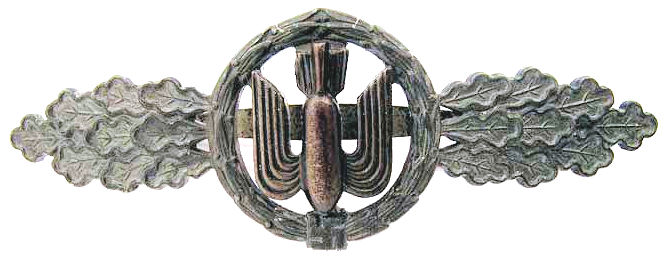



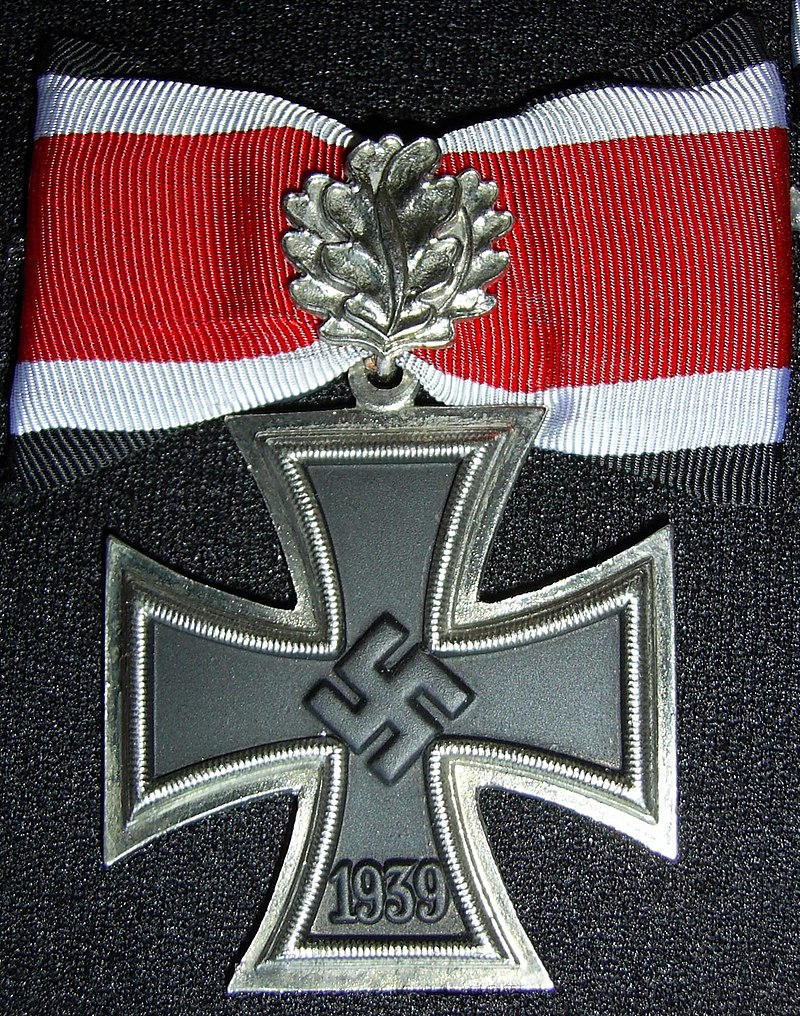

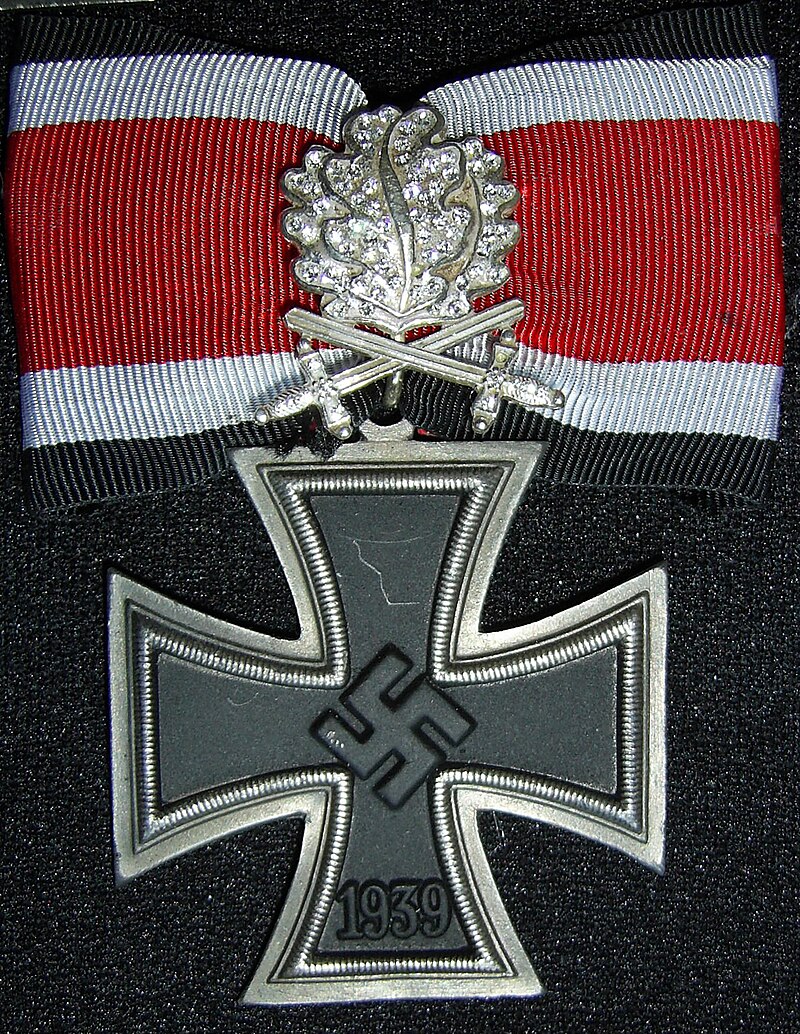











Rick V
I have searched unsuccessfully for many hours to learn the cause of death of Erich Hartmann’s 3.5 year old son. WHAT was the cause of his son’s death
Edward
Erich Hartmann was a true German knight. His striking sharp handsomeness, with blone hair, fair skin and beautiful blue eyes, matched his admirable virtues: an acute sense of individuality, iron willpower, and unwavering courage.
His biographer Raymond Toliver describes Erich as highly intelligent, with a blunt style of honesty. This book is called The Blond Knight of Germany.
Erich’s knight spirit shines brightly. His legacy endures forever.
James
Erich Hartmann’s wife is a lovely and stunning sweetheart. Their epitaph reads’ Forever in love ‘. At the age of 17, Erich fell in love at first sight with Ursula, who was less than 15 years old. She is his only love.